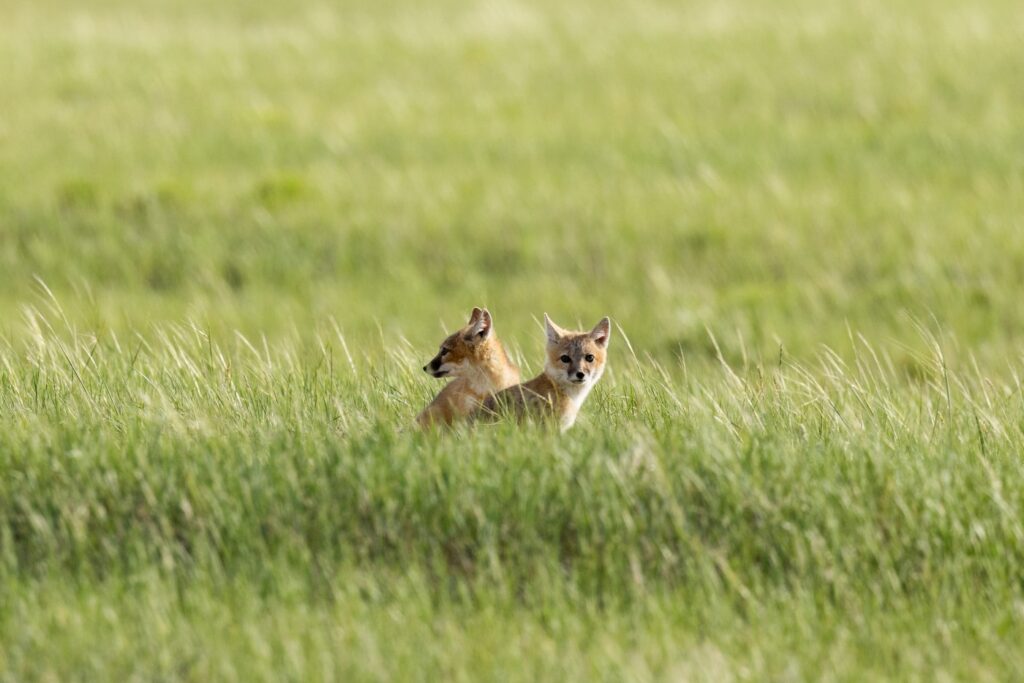Aaniiih Nakoda College students assist in return of swift fox to the Fort Belknap Reservation, part of an ongoing effort to support the recovery of North America’s smallest wild canine.

The Fort Belknap Indian Community released last week more than two dozen swift foxes captured in nearby states as part of its five-year recovery program to reintroduce this formerly abundant species on the tribal nation’s homelands.
“After being absent for more than 50 years, the swift fox has returned to the grasslands of Fort Belknap and our people could not be prouder,” said Harold “Jiggs” Main, director of the Fort Belknap Fish and Wildlife Department.
The Nakoda (Assiniboine) and Aaniiih (Gros Ventre) Tribes of Fort Belknap worked on the reintroduction program with 15 organizations across multiple states, including the Smithsonian’s National Zoo and Conservation Biology Institute, Defenders of Wildlife, American Prairie, World Wildlife Fund and Wilder Institute/Calgary Zoo.
Those working to trap swift foxes in Wyoming and Colorado and monitor them on Fort Belknap’s roughly thousand-square-mile tribal nation in Montana include students from Aaniiih Nakoda College.
“This is an important educational opportunity for our students. They not only learn new field methods, but they are actively working with our Fish and Wildlife Department and the Smithsonian to return the swift fox to our homelands,” said Daniel Kinsey, a biology instructor for Aaniiih Nakoda College.
The 28 swift foxes released during ceremonies in the last week of September joined about 100 foxes from previous releases to the community’s prairies near the border with Canada. The swift foxes are now reproducing in the wild—which the Smithsonian deemed a critical measure of the program’s success.
At least four pairs of foxes are reproducing, with 20 kits born in the wild since the original introduction of 27 foxes in the fall of 2020, according to those monitoring the Fort Belknap population.
“With support from numerous partners, Bureau of Indian Affairs and the local government, the Aaniiih and Nakoda people have been bringing indigenous wildlife back to these native grasslands for over three decades,” said Tim Vosburgh, wildlife biologist with Fort Belknap Fish and Wildlife Department.
Along with other iconic prairie species including the buffalo, swift foxes lived across much of North America’s Great Plains.
“It has been an honor for Defenders to play a role in the Aaniiih and Nakoda effort to bring back swift fox to their lands, and also as a long-term partner to recover buffalo and endangered black-footed ferrets back to their lands,” said Chamois Andersen, Rockies and Plains senior representative at Defenders of Wildlife. “Fort Belknap is truly a model in native plains wildlife conservation.”
Story published October 3, 2022
• • •
Enjoyed this story? Enter your email to receive notifications.
